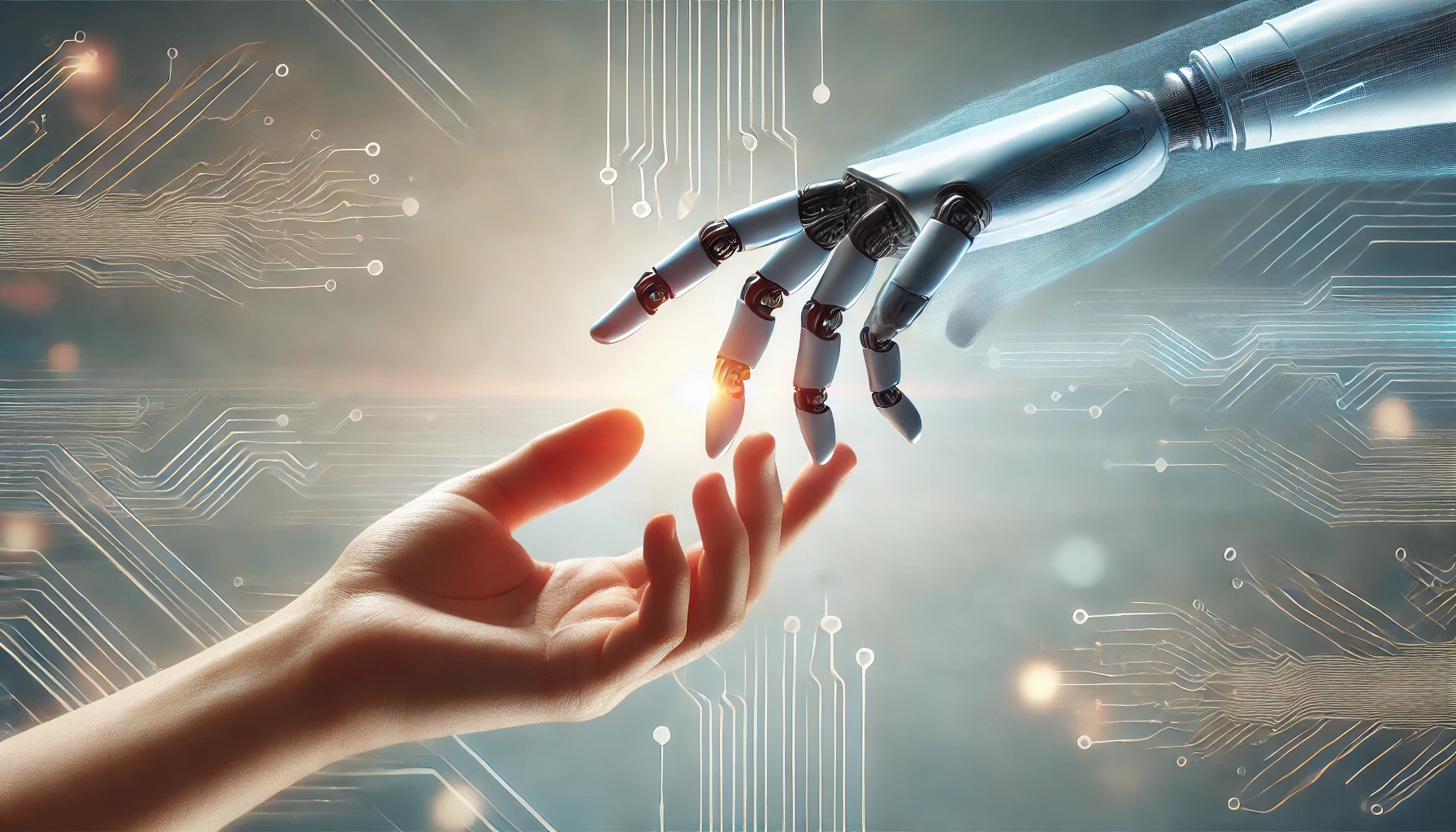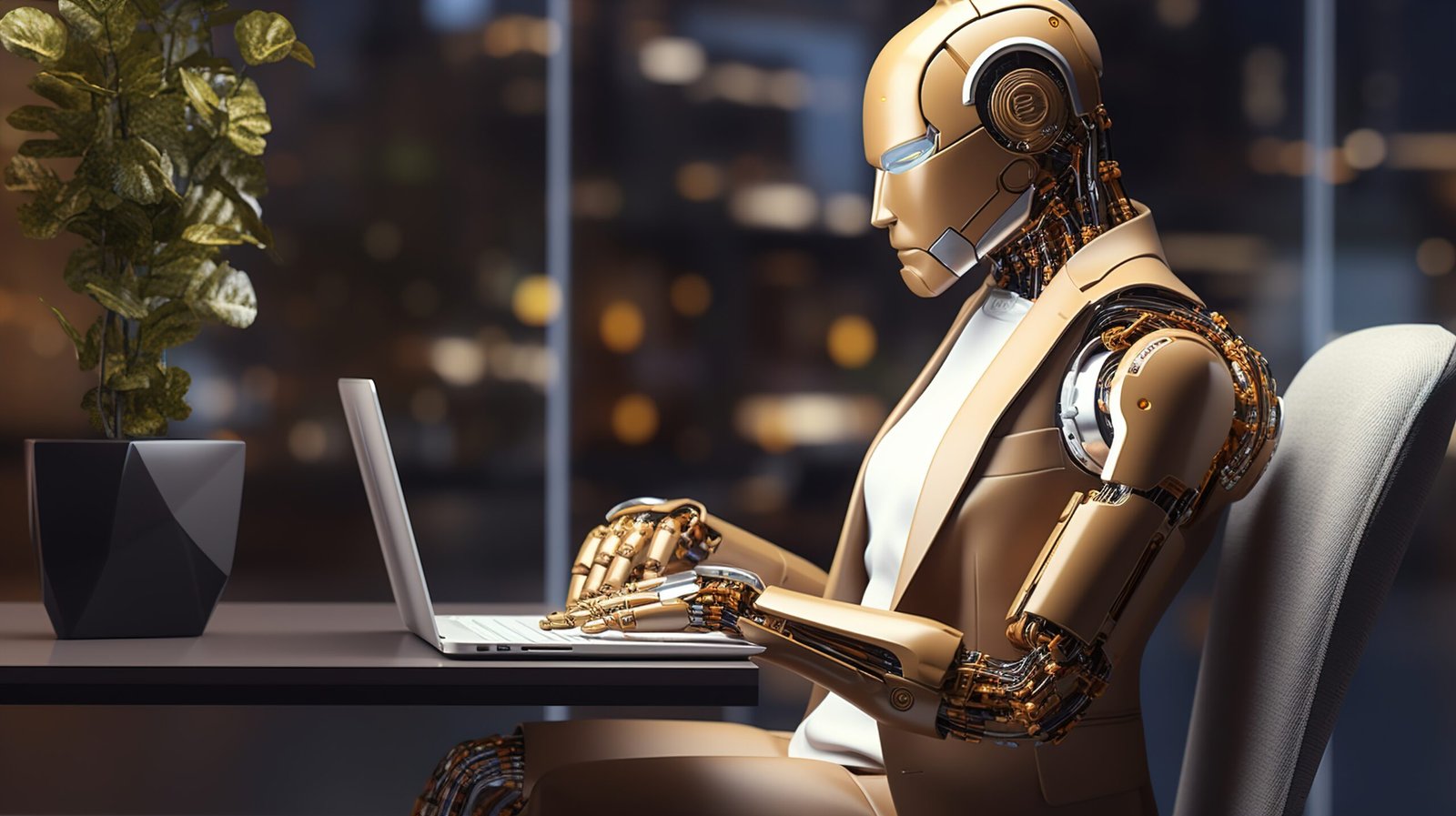
AI automation is rapidly reshaping industries across the USA, offering new tools for efficiency and productivity. From retail to healthcare, finance, and manufacturing, businesses are harnessing AI-driven automation to streamline processes, reduce human error, and enhance customer experience. However, as automation becomes more sophisticated, it’s essential to understand both its advantages and challenges.
What is AI Automation?
AI automation combines artificial intelligence with automation tools to complete tasks without human intervention. Unlike traditional automation, which follows pre-set rules, AI-driven automation can learn from data patterns, make decisions, and adapt to changes in real-time.
Image Suggestion: A conceptual image showing a robotic hand and a human hand, symbolizing AI-human collaboration.
The Rise of AI Automation in the USA
In recent years, AI automation has become more accessible and affordable. Advances in machine learning, data processing, and cloud computing have paved the way for small and large businesses to implement AI-driven solutions. The USA has become a global leader in AI research and development, spurred on by tech giants such as Google, Amazon, and Microsoft.
Image Suggestion: A map of the USA highlighting major AI hubs, such as Silicon Valley, New York, and Seattle.
Key Sectors Where AI Automation is Making an Impact
1. Healthcare
AI automation in healthcare has the potential to revolutionize patient care. From streamlining administrative tasks to aiding in diagnosis, AI tools are helping reduce costs and improve efficiency. AI-driven systems can analyze medical images, identify patterns, and even predict potential health issues, allowing for early intervention.
Image Suggestion: A healthcare professional using a tablet with AI-generated insights or a robotic arm in a medical setting.*
2. Finance and Banking
Financial institutions are leveraging AI to automate routine tasks like data entry, fraud detection, and customer support. AI algorithms can detect fraudulent activity in real-time, making financial transactions more secure. Automation in banking also enhances customer experience by providing personalized recommendations and faster service.
Image Suggestion: An illustration of an AI-powered financial dashboard or a chatbot interface representing automated customer support.*
3. Manufacturing
In the manufacturing sector, AI automation is crucial for quality control, supply chain management, and predictive maintenance. Automated robots can assemble parts with high precision and speed, while AI algorithms analyze sensor data to predict equipment failures, reducing downtime and saving costs.
Image Suggestion: A factory floor with robotic arms working on assembly lines, demonstrating automation in action.*
Benefits of AI Automation for American Businesses
- Increased Efficiency: AI automation can process massive amounts of data quickly, allowing businesses to handle repetitive tasks without sacrificing accuracy.
- Cost Reduction: By automating routine tasks, companies can reduce labor costs and improve profit margins.
- Enhanced Decision-Making: AI analyzes data patterns to provide valuable insights, allowing businesses to make informed decisions.
- Improved Customer Experience: Automation enhances customer service through chatbots, personalized recommendations, and quick responses to queries.
Image Suggestion: A graphic showing the advantages of AI automation, with icons for efficiency, cost reduction, decision-making, and customer satisfaction.*
Challenges of Implementing AI Automation
Despite its benefits, AI automation also presents several challenges.
- Job Displacement: As machines take over repetitive tasks, there are concerns about job loss, particularly in industries that rely on manual labor.
- Data Privacy and Security: AI systems process enormous amounts of data, raising questions about how securely this information is handled.
- Ethical Considerations: There are ethical concerns regarding AI’s decision-making processes, especially in sectors like healthcare and law enforcement.
- High Initial Costs: Implementing AI systems can be costly, posing a barrier for small businesses.
Image Suggestion: A balance scale showing AI automation on one side and challenges (privacy, ethics, costs) on the other, symbolizing the trade-offs.*
Future Trends in AI Automation
1. AI and Machine Learning Integration
AI automation systems are increasingly incorporating machine learning, enabling them to learn from new data and adapt without manual reprogramming. This makes AI systems more efficient and capable of handling complex tasks.
2. Rise of AI-Powered Robotics
In manufacturing and logistics, robots powered by AI are becoming more common, capable of performing intricate tasks previously done by humans. AI-powered robotics will become more accessible, even for smaller businesses.
3. Human-AI Collaboration
AI automation does not necessarily mean replacing humans; it means creating roles that involve collaboration between humans and machines. For instance, in healthcare, AI can support doctors by analyzing data while allowing them to make final decisions.
Image Suggestion: A futuristic image showing humans and robots working side by side in a factory or healthcare setting.*
How AI Automation is Shaping the American Workforce
The American workforce is likely to experience significant changes as AI automation becomes more widespread. According to a recent study, nearly 25% of current jobs could be automated by 2030. However, many experts believe that while some jobs may disappear, new opportunities in AI programming, robotics management, and data analysis will emerge.
Upskilling and Reskilling Initiatives
To prepare for these changes, businesses and government organizations are focusing on upskilling and reskilling the workforce. Training programs in AI, machine learning, and data science are on the rise, preparing workers to thrive in an automated landscape.
Image Suggestion: A group of people in a training session or workshop, symbolizing upskilling in AI and technology.*
Conclusion
AI automation is set to reshape the future of work in the USA, offering vast opportunities for growth and efficiency. While there are challenges, the benefits of AI automation are undeniable, and the USA is well-positioned to lead the way. Embracing AI responsibly, investing in workforce training, and addressing ethical concerns will be crucial in navigating the AI-driven future.
Trump wins 2024 official political race, Current News

How Did Best Accomplish His Projected Second Administration?In an uncommon rebound, Donald Trump is projected by Current News to turn into the 47th leader of the US. His re-appointment challenges…
Current News Latest Technology in the word

Here’s a comprehhttp://curentnews.com/category/USA-Newsensive post on the latest technology trends: “Embracing the Future: Latesthttps://www.google.com/url?sa=t&source=web&rct=j&opi=89978449&url=https://www.reuters.com/technology/&ved=2ahUKEwjvm5WMnseJAxVgTaQEHT2WDqkQFnoECDkQAQ&usg=AOvVaw2yY46GANvxyEx-eftFi8zL Technology Trends Revolutionizing the World” The world of technology is constantly evolving, and we’re witnessing unprecedented advancements…
US Presidential Election Map: Real-Time Results and Analysis for 2024

Curentnews:High-Speed Cricket: Inside the Thrills of Hong Kong Super SixesAs one of the most heated and closely watched U.S. Presidential campaigns in history enters its final stage on November 5,…





























































































